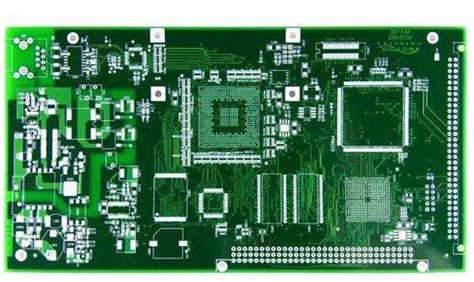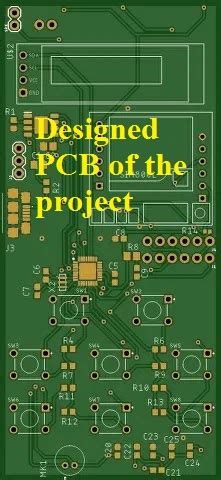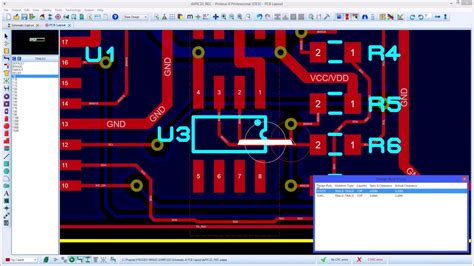Understanding the Role of the Project Control Board
The Project Control Board plays a vital role in the success of any project. It is a group of stakeholders who are responsible for providing guidance, making decisions, and ensuring that the project is delivered on time, within budget, and to the required quality standards.
Key Responsibilities of the Project Control Board
-
Strategic Direction: The PCB sets the overall strategic direction for the project, ensuring that it aligns with the organization’s goals and objectives.
-
Decision Making: The board makes key decisions throughout the project lifecycle, such as approving changes to the scope, budget, or timeline.
-
Progress Monitoring: The PCB regularly reviews project progress, identifying potential risks and issues, and taking corrective action when necessary.
-
Resource Allocation: The board ensures that the project has access to the necessary resources, including personnel, equipment, and funding.
-
Stakeholder Management: The PCB manages communication and engagement with key stakeholders, ensuring that their needs and expectations are met.
Composition of the Project Control Board
The composition of the Project Control Board may vary depending on the size and complexity of the project, as well as the organizational structure. However, it typically includes the following roles:
| Role | Responsibility |
|---|---|
| Project Sponsor | Provides overall leadership and support for the project |
| Project Manager | Manages the day-to-day operations of the project |
| Senior Management Representatives | Provide strategic guidance and decision-making authority |
| Key Stakeholders | Represent the interests of various stakeholder groups |
| Subject Matter Experts | Provide technical expertise and advice |
Benefits of Having a Project Control Board
Having a Project Control Board in place offers several benefits to the project and the organization as a whole:
-
Improved Decision Making: The PCB brings together a diverse group of stakeholders, ensuring that decisions are made with input from all relevant parties.
-
Enhanced Communication: The board facilitates communication between the project team and key stakeholders, ensuring that everyone is kept informed and engaged.
-
Increased Accountability: The PCB holds the project team accountable for delivering results, ensuring that the project stays on track and meets its objectives.
-
Better Risk Management: The board regularly reviews project risks and issues, taking proactive steps to mitigate them and minimize their impact.
-
Alignment with Organizational Goals: The PCB ensures that the project aligns with the overall goals and objectives of the organization, maximizing its value and impact.

Best Practices for Effective Project Control Board Meetings
To ensure that Project Control Board meetings are effective and productive, consider the following best practices:
-
Set Clear Objectives: Establish clear objectives for each meeting, and communicate them to all participants in advance.
-
Prepare an Agenda: Create a detailed agenda that outlines the topics to be discussed, the time allocated for each item, and the expected outcomes.
-
Distribute Materials in Advance: Share any relevant materials, such as progress reports or decision papers, with board members before the meeting to allow for adequate preparation.
-
Facilitate Open Discussion: Encourage open and honest discussion among board members, ensuring that all perspectives are heard and considered.
-
Document Decisions and Actions: Keep a record of all decisions made and actions agreed upon during the meeting, and share them with all relevant parties.

Common Challenges Faced by Project Control Boards
While Project Control Boards can be highly effective, they may also face certain challenges, such as:
-
Conflicting Priorities: Board members may have competing priorities or interests, which can make decision-making difficult.
-
Lack of Engagement: Some board members may not be fully engaged or committed to the project, leading to a lack of participation and support.
-
Information Overload: The board may be overwhelmed with too much information, making it challenging to focus on the most critical issues.
-
Resistance to Change: The board may be resistant to making necessary changes to the project, even when faced with evidence that such changes are needed.
-
Insufficient Authority: The board may lack the necessary authority to make certain decisions or implement changes, limiting its effectiveness.

Strategies for Overcoming Project Control Board Challenges
To overcome the challenges faced by Project Control Boards, consider the following strategies:
-
Clarify Roles and Responsibilities: Ensure that all board members understand their roles and responsibilities, and hold them accountable for fulfilling them.
-
Foster a Collaborative Environment: Encourage a culture of collaboration and open communication among board members, and work to build trust and rapport.
-
Prioritize Information: Focus on the most critical information and issues, and avoid getting bogged down in unnecessary details.
-
Be Open to Change: Encourage the board to be open to change when necessary, and provide evidence and rationale to support proposed changes.
-
Escalate Issues When Necessary: If the board lacks the authority to make certain decisions or implement changes, escalate the issue to the appropriate level of management.
Frequently Asked Questions (FAQ)
-
What is the difference between a Project Control Board and a Steering Committee?
A Project Control Board is typically focused on the operational aspects of the project, while a Steering Committee is more strategic in nature and provides high-level guidance and direction. -
How often should the Project Control Board meet?
The frequency of Project Control Board meetings may vary depending on the stage of the project and the level of activity. However, it is common for the board to meet on a monthly or bi-weekly basis. -
Who should chair the Project Control Board meetings?
The Project Sponsor or a senior management representative typically chairs the Project Control Board meetings, ensuring that the meetings stay focused and productive. -
How can the Project Control Board ensure that its decisions are implemented?
The Project Control Board should assign clear responsibilities and timelines for implementing its decisions, and regularly follow up to ensure that actions are being taken as agreed. -
What should be included in the Project Control Board meeting minutes?
The meeting minutes should include a summary of the topics discussed, decisions made, actions agreed upon, and any open issues or risks that need to be addressed. The minutes should be distributed to all relevant parties in a timely manner.
In conclusion, the Project Control Board plays a critical role in the success of any project. By providing guidance, making key decisions, and ensuring that the project stays on track, the PCB helps to deliver projects that meet the needs of the organization and its stakeholders. By following best practices and strategies for overcoming common challenges, Project Control Boards can be highly effective in driving project success.

Leave a Reply